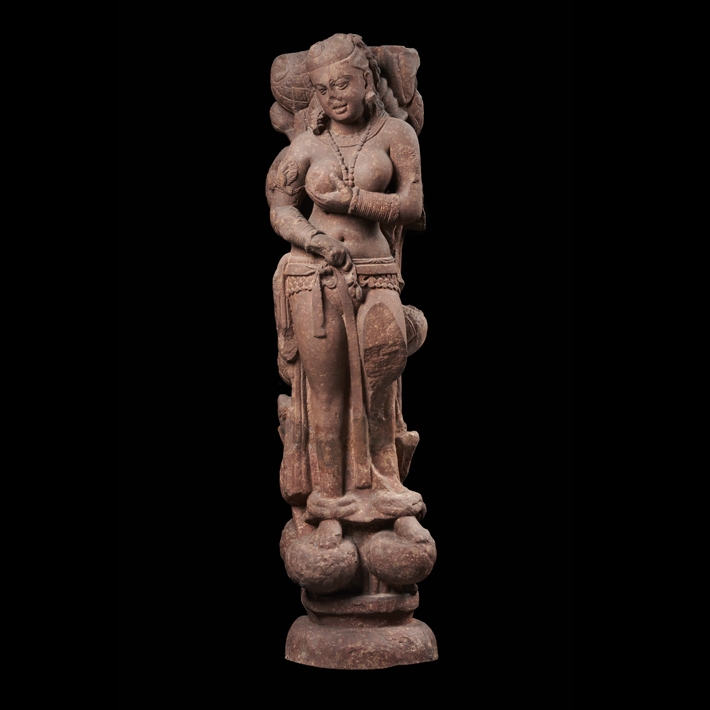7.Goddess of abundance, Śrī Lakṣmī

- 2nd century
- Jamalpur, Mathura, Uttar Pradesh
- National Museum, New Delhi
In this quintessential image of Srī Lakṣmī from early India, the goddess is represented as a beautiful, almost-naked woman richly adorned with heavy jewelry, from her hair ornaments to her massive anklets. Two lotuses support her feet and are the source from which she emerges. The embodiment of the generative powers of water and plant life, Śrī Lakṣmī developed from the concepts of sri- that which is pleasing to look upon- and lakṣmī-auspiciousness in all its forms- outlined in the Rigveda, the oldest religious text in India. On the reverse lotuses grow from a vase of plenty that holds the primordial waters, while a pair of peacocks, perched on a lotus bloom, announce the imminent arrival of the monsoon.

 Previous
Previous